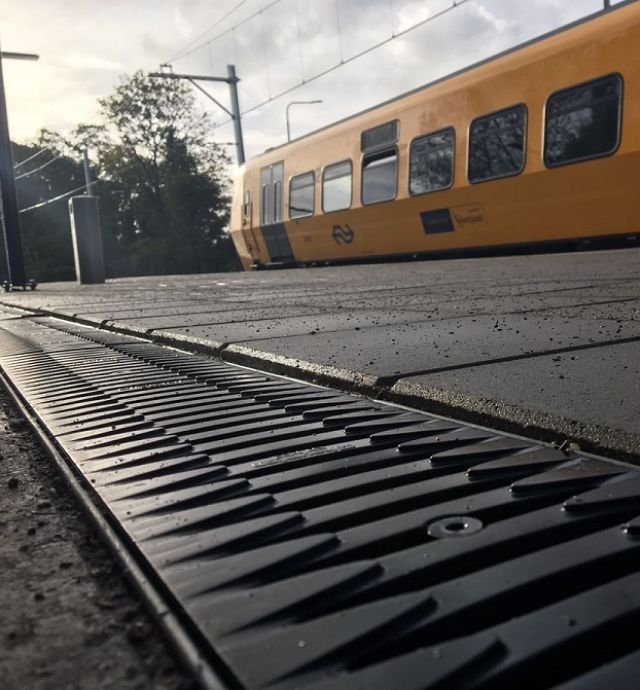Load class according to EN 1433
Load class according to EN 1433
up to D 400
up to D 400
up to D 400
up to F 900
Nominal width | System size
Nominal width | System size
100, 150, 200, 300
100 & 200
100 & 150
1000, 2000, 3000, 5000, 8000, 10000
Materials of the lower parts
Materials of the lower parts
Polypropylene (PP), 100 % recycled composite
Modified polypropylene
Polypropylene (PP), 100% recycled composite
Modified polypropylene (PP), 100 % recycled composite
Angle housing
Composite frame 20 x 20 mm insertion depth
Grating variants
– Longitudinal bar grating
– GUGI design gratings
– Mesh gratings
– FIBRETEC and METROPOLIS design gratings
⇒ Made of ductile iron, polypropylene (PP), galvanised steel, stainless steel
Integrated award-winning FIBRETEC heelsafe design
– Slot gratings made of galvanised or stainless steel (V2A, V4A)
– Duo slot gratings
– Symmetrical & asymmetrical versions
Retained ductile iron slotted top
Gradient
– Constant depth
– Stepped fall
– Constant depth
– Stepped fall
– Constant depth
– Stepped fall
– Constant depth
– Stepped fall
Special characteristics
– Pre-assembled ready for installation
– Low weight, easy to handle and install
– Channel body can be easily machined, cut to size on-site
– Large retention volume despite slim channel design
– Monolithic drainage channel
– Vandalism-proof
– Easy cleaning via the inspection box
– Unique connection technology of the slot tops
– Removeable access tray
– Radial installations possible
– Large channels for retention
– Channel run without slotted top achievable, for example, under planted areas
– Cable installations can be threaded though throat voids of the channel












